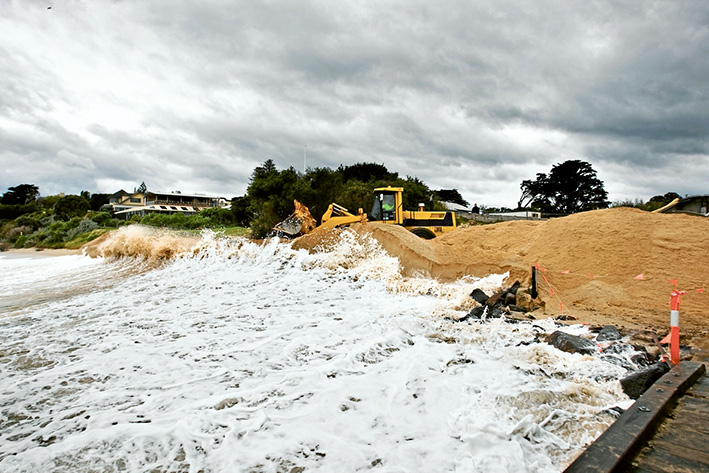
RECOMMENDED ways to protect Portsea beach from erosion for the next 50 years vary in cost from $2.2 million to $32.5m.
However, consultants hired by the state government say that only two of five options tackle the causes of erosion along 400 metres of the beach near Portsea pier.
The consultants warn that doing nothing and removing rocks and sand bags laid to protect the beach will “result in the loss of some existing foreshore buildings within 10 years”.
Of the two options that the consultants believe will fix the problem –
configuration dredging or building a breakwater – dredging to create “wave reflection trenches” is seen as providing a permanent solution to the largest area.
The consultants say wave heights at Portsea pier would be “significantly reduced” and sand removed from the trenches could be used to build up the eroded beach.
If adopted by the Department of Environment, Land, Water and Planning (DELWP) the dredging option would cost an estimated $20.42m and take three years to complete, including nine months of construction.
The five suggestions made by Advision, part of the Worley Parsons group, “to ameliorate the adverse impacts of coastal erosion processes at Portsea front beach” are:
- Configuration Dredging
- Breakwaters
- Groynes
- Sand Nourishment
- Revetment
Advision said the criteria in choosing the five options included their impacts waves, currents and transporting sediment, safety, sea level rises caused by climate change and cost over 50 years.
“Of the options considered, only the dredged configuration and breakwater options address the primary cause of erosion at Portsea front beach,” the Advision report states.
“Groynes and sand nourishment options come with ongoing sand nourishment maintenance costs. Removal of the existing protection works would result in the loss of some existing foreshore buildings within 10 years.”
Advision said geotechnical investigation would be needed if DELWP decided to proceed with the dredging option.
The five options and costings follow an earlier report in January 2016 and background notes provided by the department which acknowledged that swell waves from Bass Strait had caused Portsea’s sand loss.
The department’s notes did not mention channel deepening in 2008-09, the biggest and most recent change to the Port Phillip seabed.
The Port of Melbourne Corporation denied its two-year $720 million dredging project caused the erosion but two state government-commissioned reports – by Water Technologies and the CSIRO – revealed the removal of sand further out in the bay had changed the shape and power of waves hitting the beach.
Reports of abnormally large waves hitting the front beach were first made in late 2008.
Most of the beach was washed away in 2010 and the government then spent about $3 million to replace lost sand and protect the beach with sandbags and rocks.
The authorities had repeatedly said the beach was destroyed by natural causes such as storms, higher sea levels and natural erosion (“Rocks for Portsea beach”, The News, 8/8/13).
Water Technologies’ report stated channel deepening had created channels that allowed larger, more powerful waves to sweep into the beach.
The CSIRO report stated a change in the local wave conditions was the likely cause of the erosion at Portsea but this could not be measured accurately due to a lack of “long wave records at Portsea beach that pre-date the erosion event and CDP [channel deepening project]”.
First published in the Southern Peninsula News – 11 April 2017


